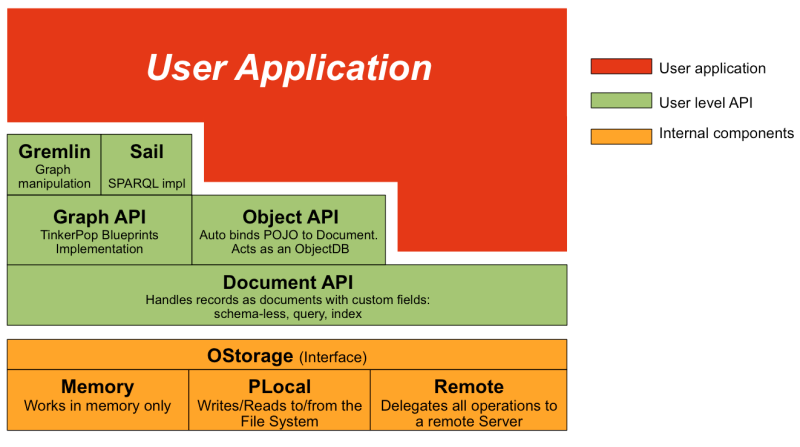I’ve been looking around for a new NoSQL database for a new application. Based on some preliminary Graph databases fit the sort of requirements that I have. (Then again every model is a Graph!) In particular I am looking at the implementations of the Property Graph Model.
Property Graphs

A graph contains Vertices (or Nodes) connected via Edges (or Relationships). Vertices and Edges have labels (or identifiers). They can contain properties or a map of keys to values.
Enter OrientDB
OrientDB is an open-source, java based, Graph + Document database. They actually have a long list of features. Importantly OrientDB supports the Tinkerpop API which is supported by multiple Graph databases.
While OrientDB seems to have fair documentation I found it extremely confusing. They have many features and alternate APIs. In this blog I am going to provide a quick overview and focus only on getting started with the Graph API.
Code
This blog post is backed by code on github. Check the project out for complete working code samples.
Architecture

There are 3 possible storage types or engines-
- In memory
- Local database
- Remote server
The multiple APIs available are-
- Graph API compliant with TinkerPop.
- Document API.
- Object API which is JPA like.
Getting started
Dependencies
Include the maven dependency com.orientechnologies:orientdb-graphdb to get started using OrientDB in your application. This pulls in a bunch of dependencies that can possibly be trimmed for production.
Create a connection
Initialize a factory for graph connections in the future using the OrientGraphFactory. And obtain a transaction aware connection to the database by getting an OrientGraph instance.
// Once in the application
OrientGraphFactory factory = new OrientGraphFactory("url");
// Get connection to database
OrientGraph graph = factory.getTx();
try {
...
} finally {
// Return connection to pool
graph.shutdown();
}Create Vertex and Edges
OrientGraph has various APIs for graph operations
OrientGraph graph = ...;
# Create vertex
Vertex v1 = graph.addVertex(null);
# Add property
v1.setProperty("name", "v1");
Vertex v2 = ...;
# Create an Edge from v1 to v2
Edge e = graph.addEdge(null, v1, v2, "relationship");Iterating and other operations
The Graph returns a list of all Vertices.
OrientGraph graph = ...;
for (Vertex v : graph.getVertices()) {
...
}Other CRUD operations on Vertices, Edges and their properties also exist.
Java object transformation
In the example above I have shown the base API to create a common property based Vertex and Edge. However a better API is using POJO’s that contain the fields for the model and then transparently persist them into the map.
TinkerPop frames allow transformation from a POJO to a Vertex and vice-versa. API example is-
Graph graph = ... ;
FramedGraphFactory factory = new FramedGraphFactory();
FramedGraph<Graph> framedGraph = factory.create(graph);
Foo f = framedGraph.getVertex(id, Foo.class);
Frames documentation contains an example where annotations are used to describe the fields and relationships.
To access the underlying API, any class can be cast to a VertexFrame which can return the underlying Vertex.
Manually creating mapper classes is another option to convert from POJO’s to Graph classes.
OrientDB also allows for an actual Schema. I’ll need to investigate how this can be used.
WIP
I’ll be updating this blog with more basic APIs.
Unknowns
- OrientDB seems to support so many features. How is performance?
- Hazelcast
- Indexes
- OrientDB schema-classes
- SQL